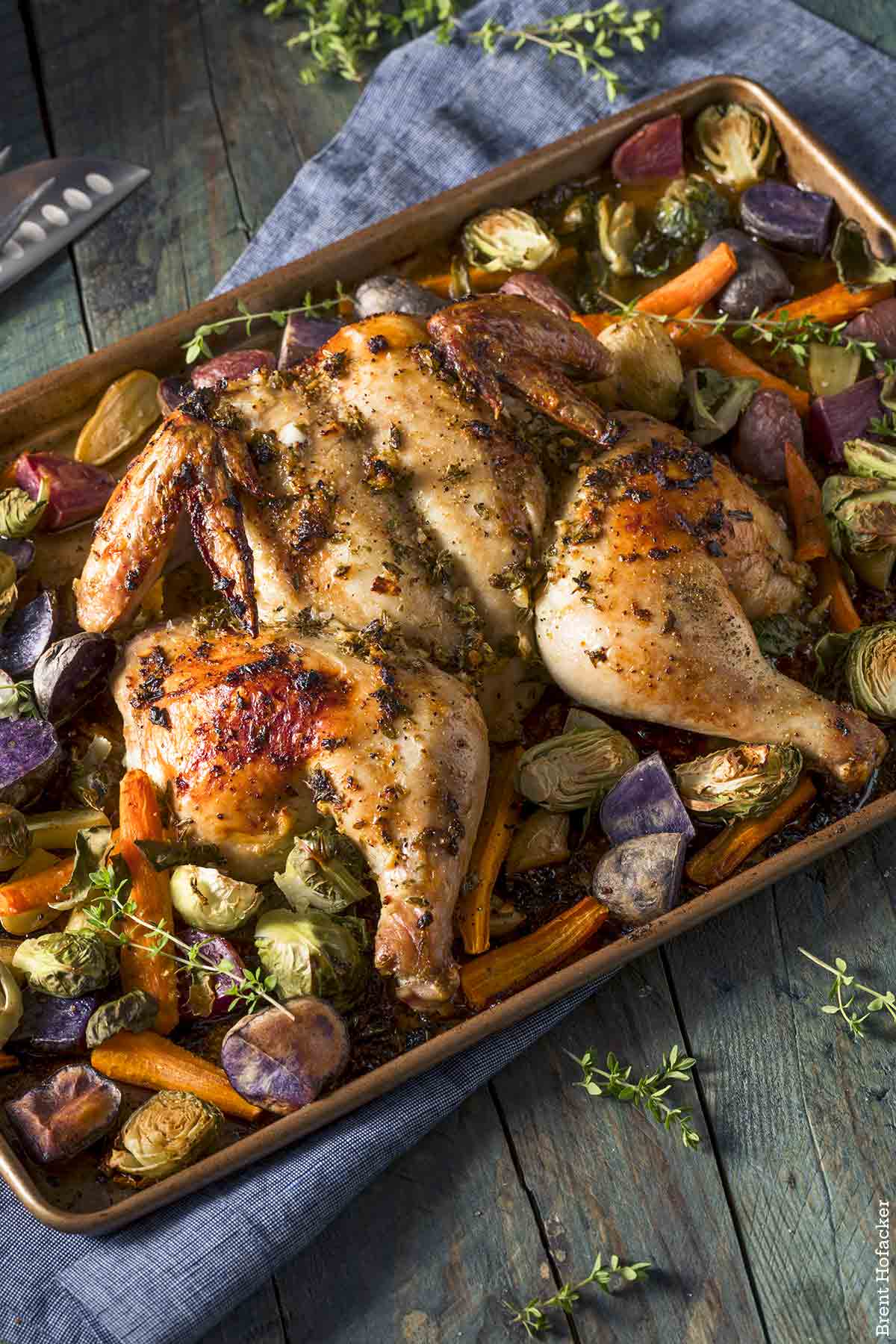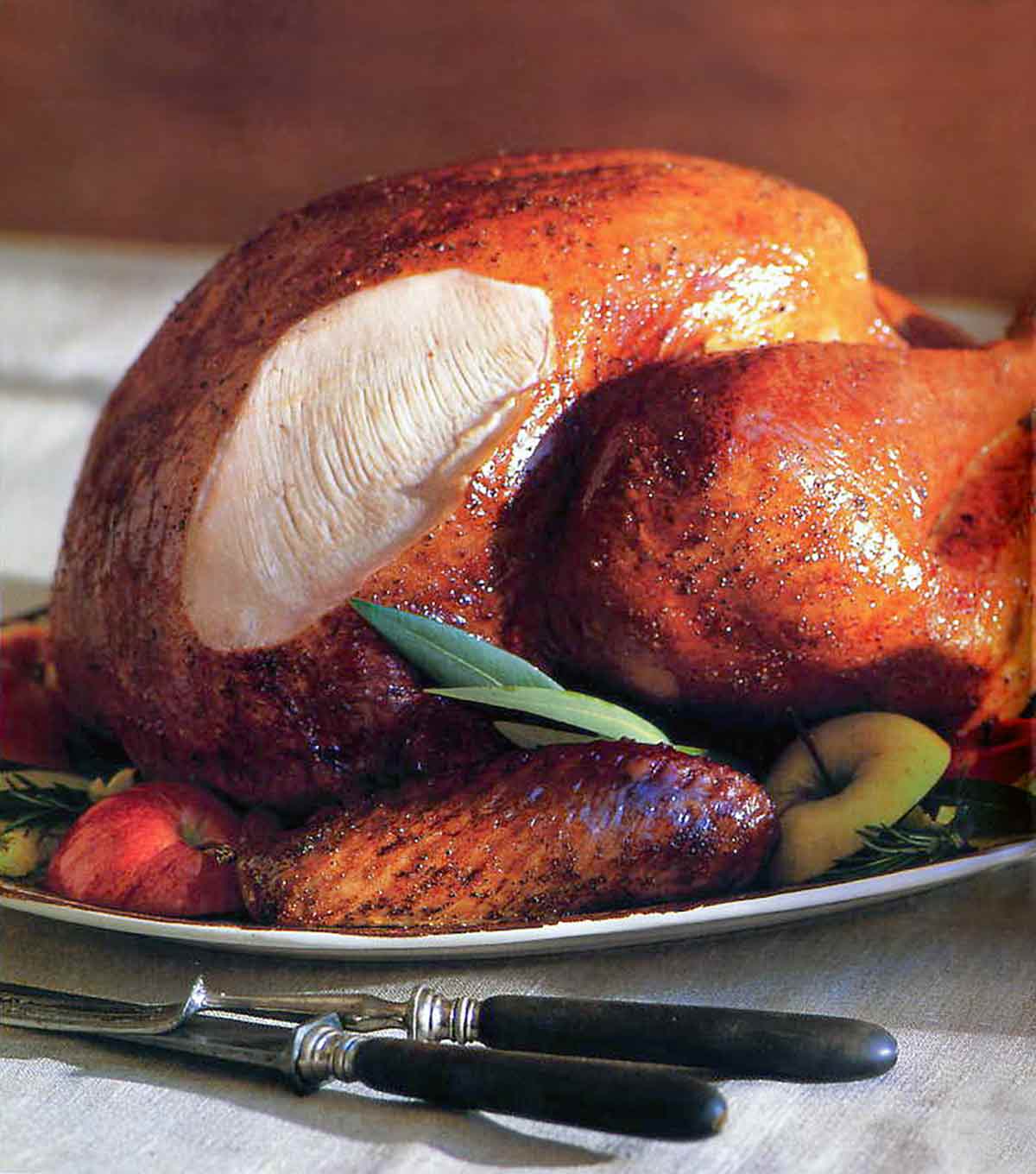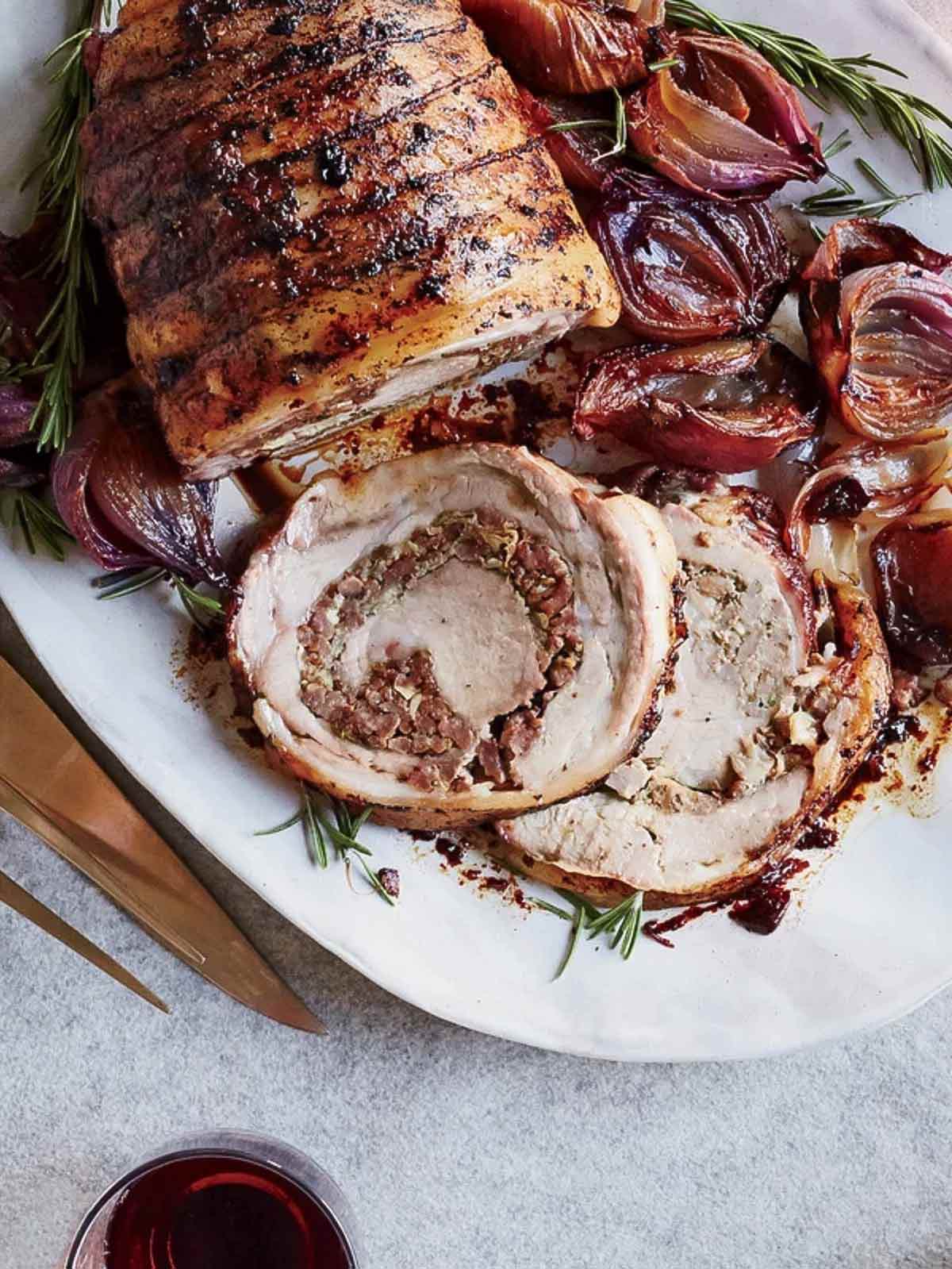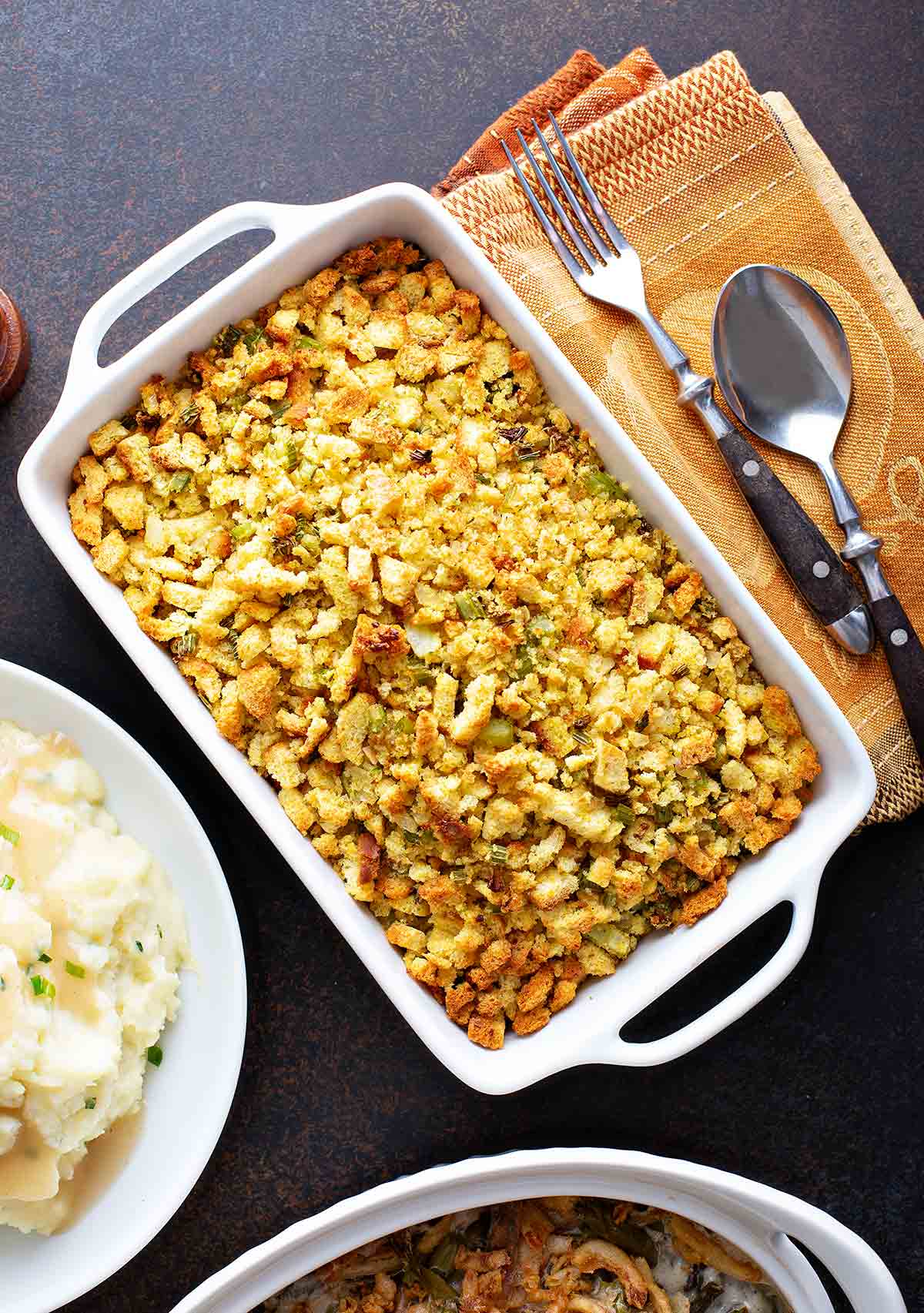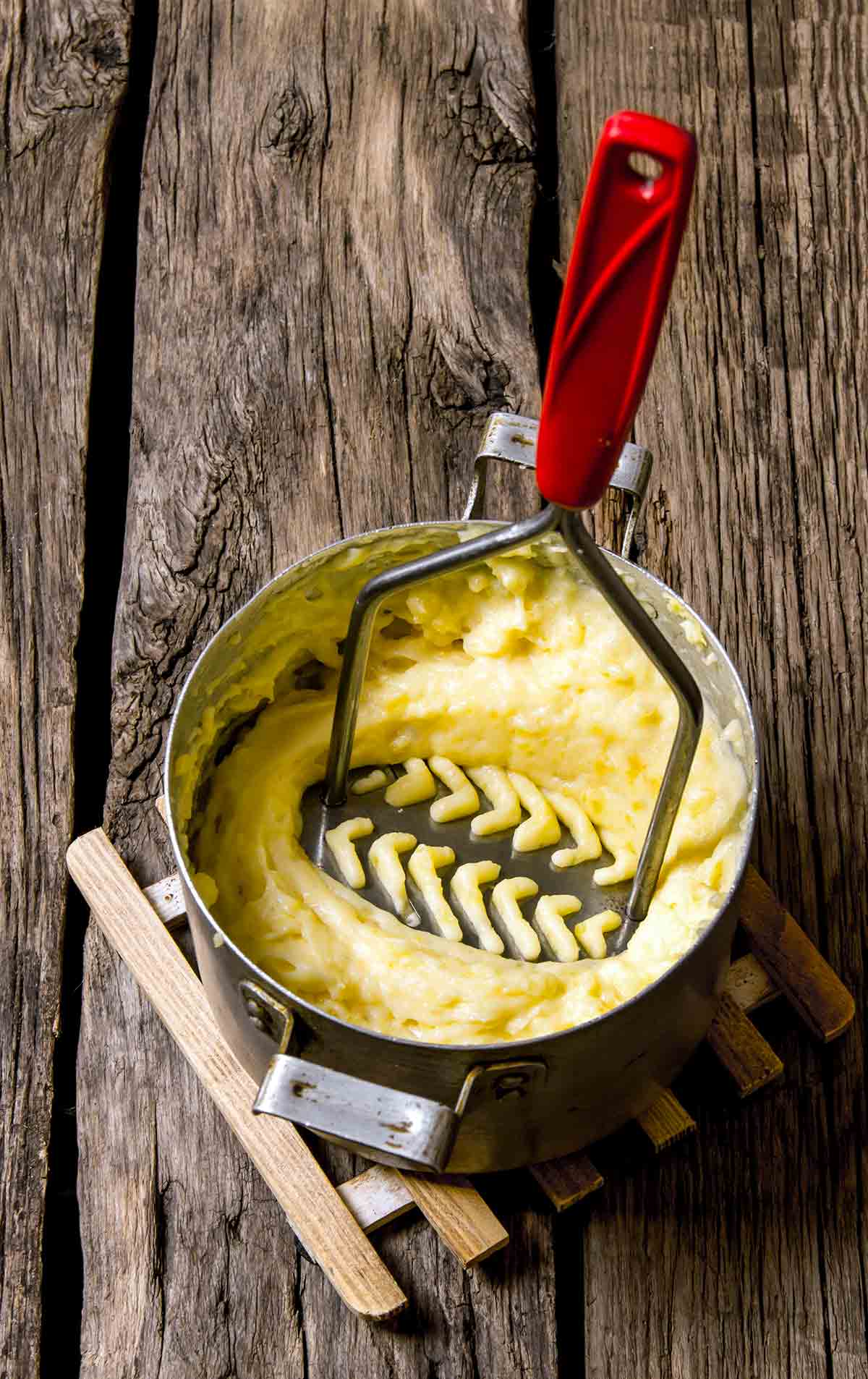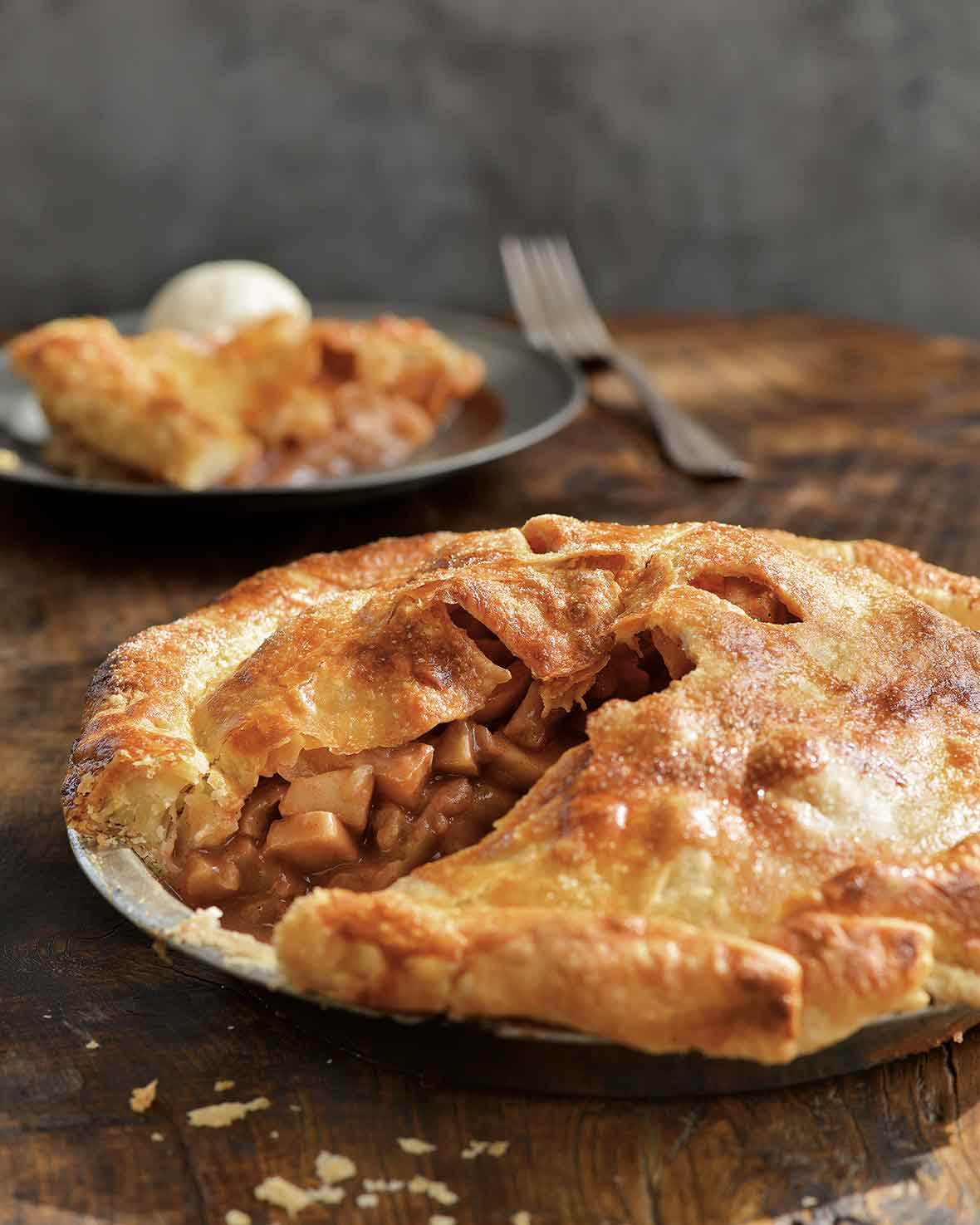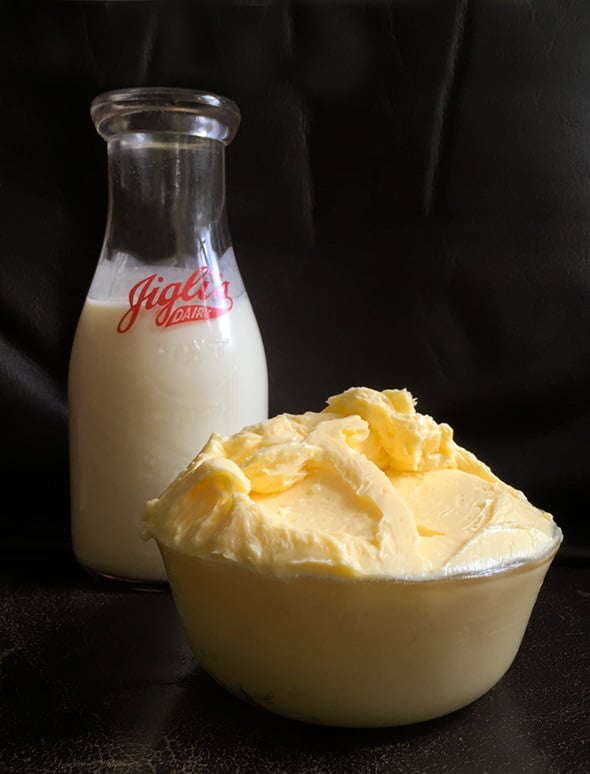This year, the American Thanksgiving holiday is on November 24th. No matter if you live in Plymouth, Massachusetts, or Plymouth, North Dakota, you have questions. Lots and lots of questions. And we have answers for nearly every Thanksgiving question you might have. Ninety-nine of them, in fact. So read on!
Whether this is your first Thanksgiving or your sixty-first (I’m looking at you, David Leite), if you’re a nervous cook, or you just have questions, we’ve got you.
Thanksgiving for many is traditional, and people know what they want. A big juicy turkey, burnished to perfection. Stuffing (or dressing), carb-loaded and thyme-filled. Mashed potatoes, creamy and buttery. Green-bean casserole, not-quite-crisp, and plenty oniony. Pie, covered with whipped cream and full of cinnamon.
The thing is, we often turn our attention to the big day the weekend before, if not later. And that means supermarkets jam-packed with people having “aisle rage,” you freaking out because of overambitious recipes (honestly, is Thanksgiving for 12 the time to try a 42-step new-fangled whole-turkey confit recipe?), pulling the turkey out of the freezer on Wednesday night because you’ve been bingeing Ted Lasso−you get the picture.
Trust us, planning ahead is the only way to go. And it starts with this list. A list of just about every question we’ve ever been asked about Thanksgiving during the past 22 years.
And on the holiest of holy food days, take some advice from the saint of cooking, Julia Child: “No matter what happens in the kitchen, never apologize.” Just add butter and it’ll all work out alright.
For turkeys smaller than 16 pounds, estimate 1 pound per serving (this accounts for bone weight). For larger birds, a bit less is fine; they have a higher meat-to-bone ratio. But if your goal is to have lots of leftovers, aim for 1 1/2 pounds per person whatever the turkey’s size. For eight people, that means you’re looking for a 12-pound turkey.
Sure. Why not? Pre-stuffed turkeys take a lot of the work out of it. You don’t get to customize your stuffing but that’s a small price to pay if you’re anxious about cooking a turkey. DO NOT THAW a commercially pre-stuffed frozen turkey before cooking. A word of warning−if you do thaw it, in the trash bin it goes. Why? In a word…bacteria. When combined, raw turkey and uncooked stuffing are a perfect environment (stuffing is porous, remember) for bacteria growth. You’re taking an enormous chance by cooking a completely thawed, pre-stuffed turkey−the heat of the oven might not be enough to make all that stuffing safe. If there are ice crystals in the turkey and the stuffing is still frozen, it’s safe to cook.
If you have spent any time at all looking for a Thanksgiving turkey, you know that there are many, many kinds on offer. Organic, frozen, fresh, self-basting. What does that even mean? It’s cool−we’ve got a list. 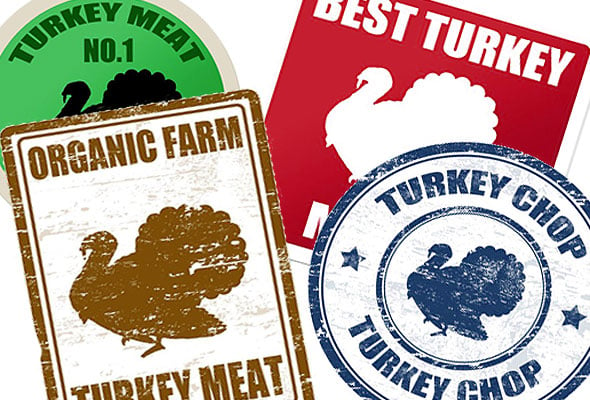
If you’re having a smaller, more intimate dinner you might not want to cook an entire bird. One (three-pound) half-breast will feed two to four people. A whole (six- to seven-pound) turkey breast (two breasts, still joined at the breast bone) will feed six to eight people.
Even the most basic Thanksgiving will need the following tools−a roasting pan (flimsy foil ones aren’t great, invest in a sturdy, metal one. Future You will be thrilled!), a meat thermometer, a whisk, a carving knife, lots of heavy-duty aluminum foil, and a plate large enough for serving.
The safest method is refrigerator thawing. For this method, simply place the whole unopened turkey breast-side-up on a pan or rimmed baking sheet in your refrigerator.
Here’s the calculation: Plan on 24 hours of fridge thawing for every 4 pounds of frozen turkey. For example, budget 5 full days of thawing in the fridge for a 20-pound turkey. Keep the turkey wrapped, and occasionally check to see if the baking sheet or roasting pan needs to be drained.
If you don’t have the time to thaw your Thanksgiving turkey in the fridge, this is one of the fastest ways. All you need to do is place the frozen turkey in its unopened wrapper, breast down, in a sink filled with cold tap water. Change the water every 30 minutes to keep the surface of the turkey cold. A 10-pound turkey can be ready in about 2 hours. We also have more thawing tricks and tips from the Never Cook Naked Guys.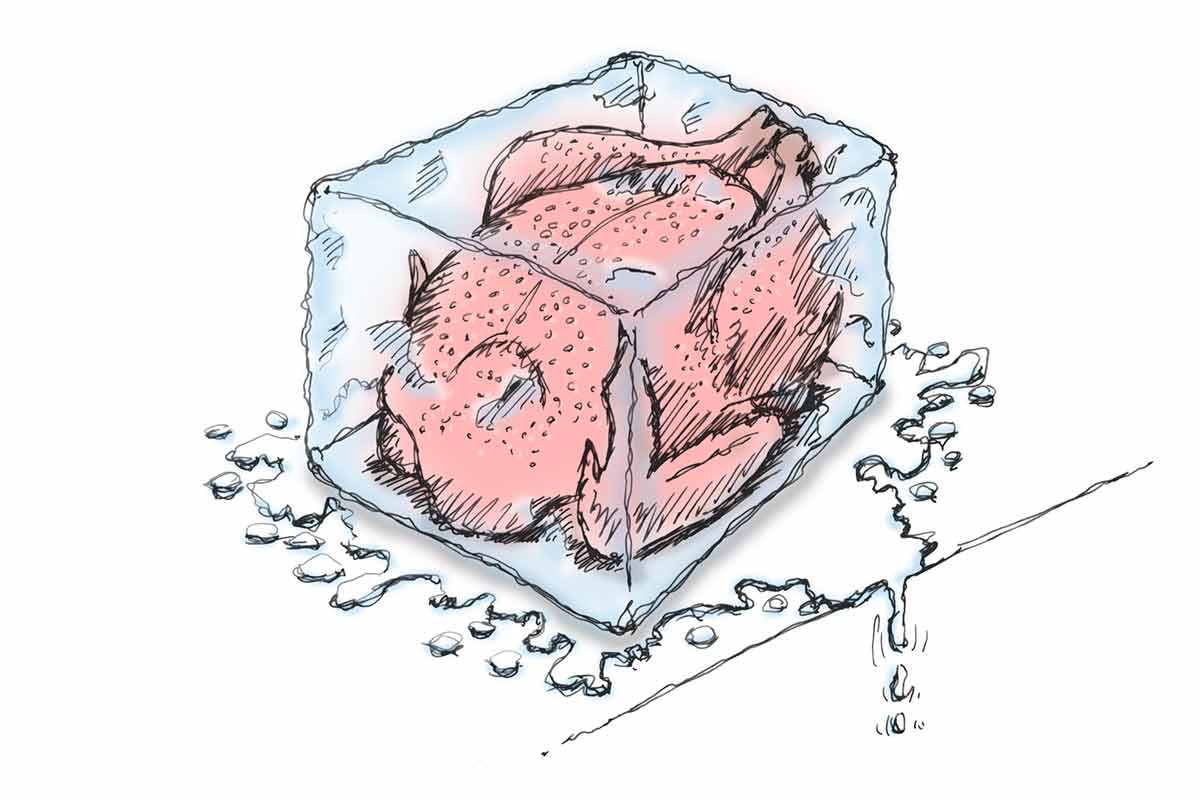
You can, actually. You won’t be able to do anything super fancy to a frozen turkey but you can baste or season it once it starts cooking. And be aware that the likelihood of dry white meat increases with a frozen bird.
This is a pretty straightforward method−put that frozen bird in a roasting pan and cook it at 325℉ until all parts reach 165℉. You’re looking at about 50% more cooking time because it’s frozen, though. It’s safe to do and even USDA approved. Cooking a frozen turkey can only be done in the oven−DO NOT grill or deep-fry a frozen turkey, it’s dangerous and not worth the risk. And don’t stuff a frozen turkey, make a separate dressing instead.
A moist turkey is what we’re all aiming for, right? Brining a turkey adds a lot of water (and salt) to your protein and keeps it from drying out during the time in the oven. But it can dilute the flavor of your turkey and make it, well, watery. If you’re determined to wet brine your bird, add lots of aromatics to the brine and use just enough water to cover. Or you can even add booze to the brine as in this Brandy-Brined Turkey Breast.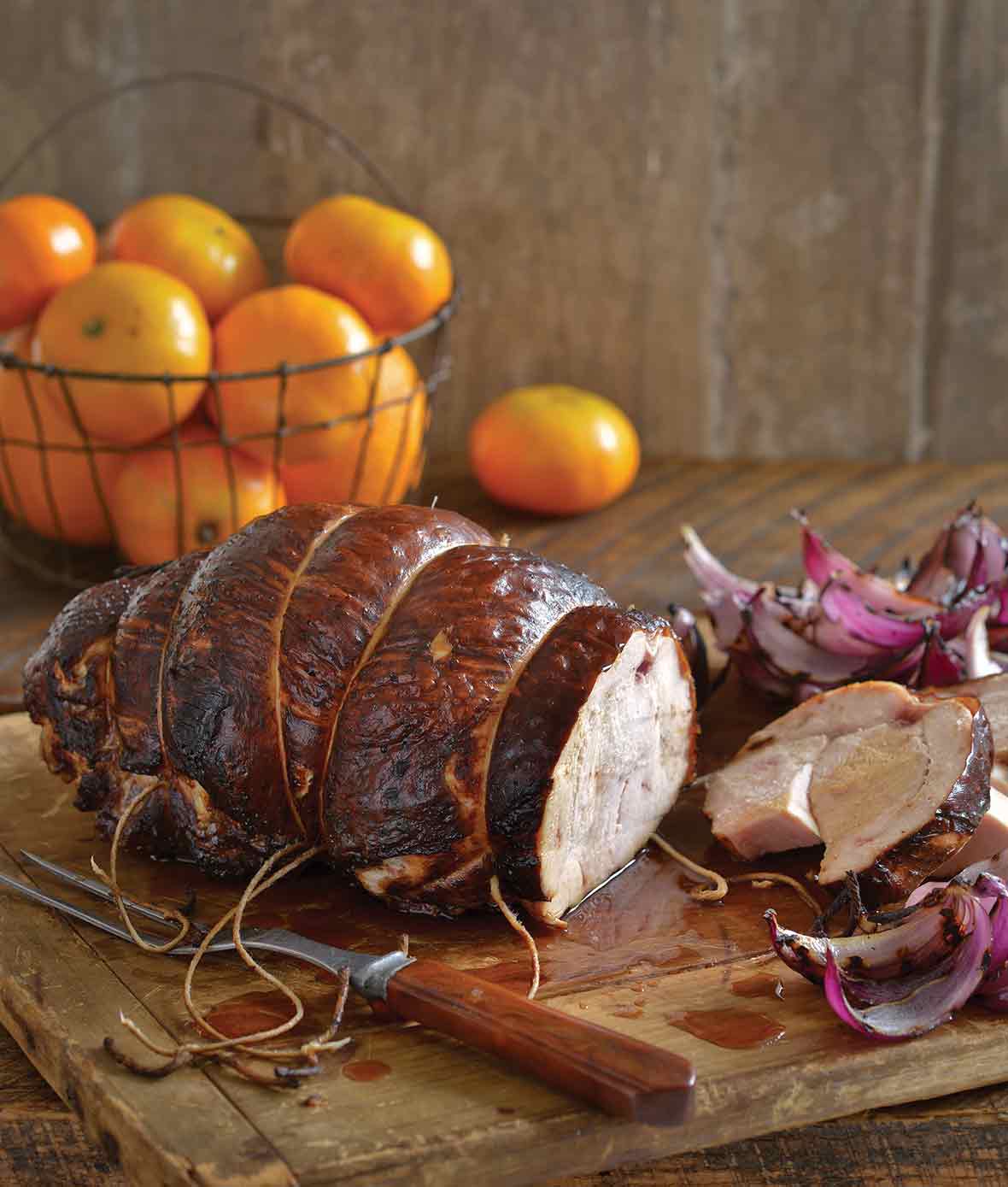
A wet brine is pretty much just salty water you soak the bird in, to keep the white meat from drying out. A dry brine (also called pre-salting) does what it says−it’s a brine without water. A dry brine involves rubbing the salt, seasonings, and/or sugar directly onto the meat and skin, and then letting the meat rest in the refrigerator for a period of time before cooking.
Okay. You’ve read about wet-brining and dry-brining. Not interested? Then check out this post about Bell’s Poultry Seasoning. David has a bit of a food crush on the ubiquitous (in the Northeast US, at least) Bell’s. For the rest of us, Bell’s is a seasoning mix made of ground rosemary, oregano, sage, ginger, marjoram, thyme, and pepper. It doesn’t contain any salt, artificial ingredients, or preservatives, and it’s gluten-free. Sound’s good, right? 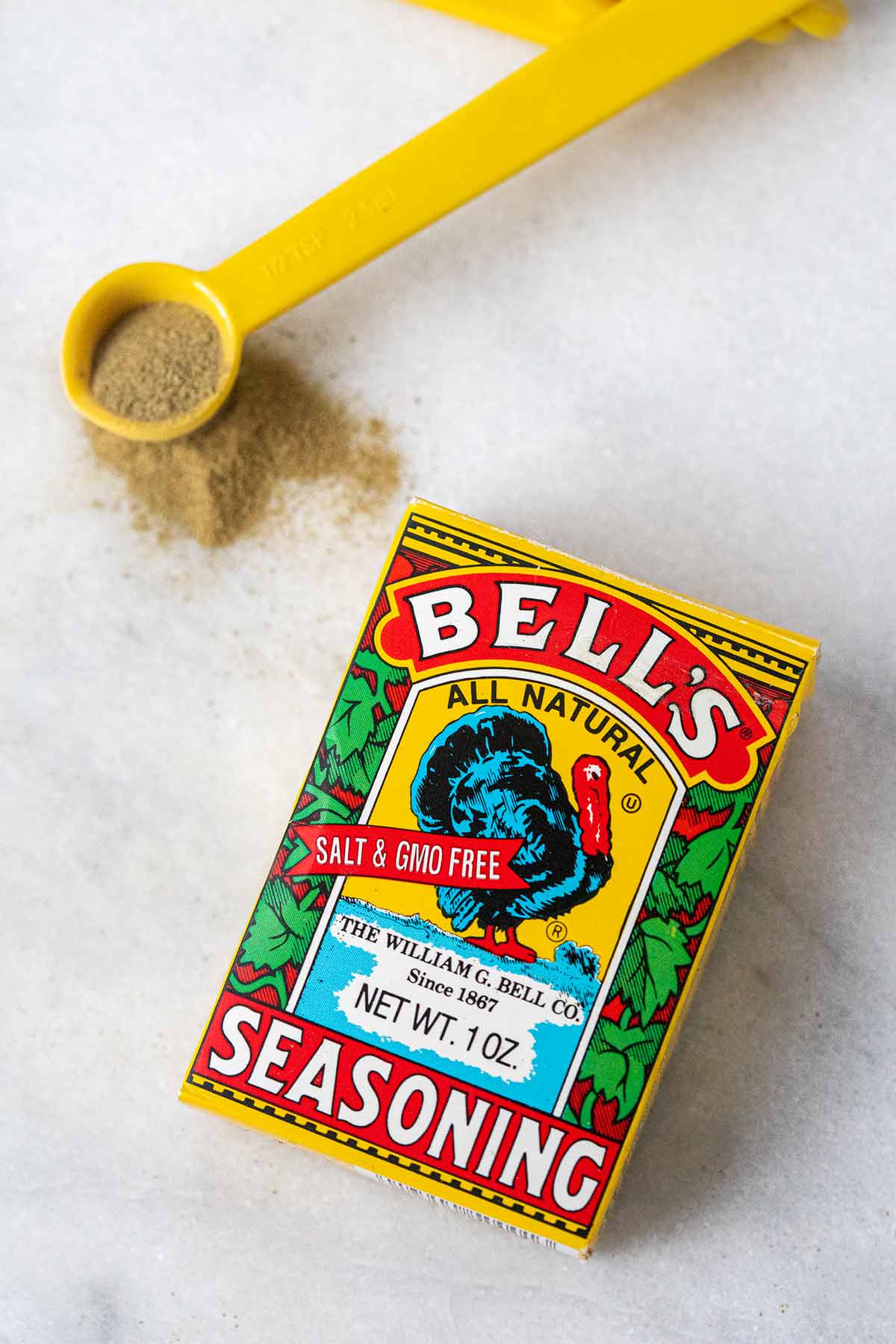
As crazy as it sounds, it happens. You have more guests than oven space, and a 22-pound bird is out of the question. Now what? Never fear, the answer doesn’t involve a chainsaw or buying a second oven.
Spatchcocking means that you’re cutting out the backbone and flattening the turkey (or chicken), making all the parts cook evenly (the white meat is done at the same time as the dark meat), as well as cooking the bird from both sides. If you’re planning to make stock, roasting from both sides is perfect, because you’ve doubled the surface of the bird. More bird = more flavor in your stock. The only downside: It doesn’t look like the old-school Norman Rockwell Thanksgiving turkey. (We can live with that.)
Well, spatchcocking is a good start. But if you want it faster, start spatchcocking and keep cutting. If you have the time for extra prep, you’ll find it easier. You can cook a turkey in about an hour if you or your butcher cut a spatchcocked turkey into pieces before roasting. Using sharp kitchen shears, cut out the backbone, divide the breasts, remove the legs and wings. Season and roast, as usual, but you’re just gonna eat a lot sooner.
Grilling (or even smoking) a turkey is a pretty terrific idea. It tastes fantastic and, perhaps even better, it’ll free up all that precious oven space. If you’re experienced with a grill, this might be something you want to try. It takes about the same amount of time to cook and is one way to really wow your guests.
Time for a temperature check! Use a meat thermometer to determine when your turkey is fully cooked. The turkey should reach 165°F in the thickest part of the thigh, the breast, and in the center of the stuffing.
Ok. LC is a non-judgment zone, but let’s just agree that meat thermometers are an absolute necessity, especially when cooking a big ole bird for Thanksgiving. To check if it’s done without a thermometer, give the drumstick a wiggle. It should come apart easily−the joints will be completely loose if it’s cooked through. Also, the juices that spill out when you wiggle the drumstick should be absolutely clear.
You have two options here. If you’re in a hurry and it’s still got a way to go, your best bet might be to start slicing. Cut it into pieces (the larger the better), spread it on a baking sheet, cover it with foil, and put it back in the oven. Covering it with foil will keep the edges from drying out while the middle cooks through. Unfortunately, this means that you won’t be carving it at the table but at least it’s cooked, right? If you have a little more time, the Never Cook Naked Guys have a plan for you, too.
Cooking a turkey is an admittedly uphill battle−especially on Thanksgiving Day when you’re juggling a gazillion things. The breasts dry out quickly, the legs (which take longer to cook) are tucked inside the roasting pan, making them take even longer to cook. If for any of a million good reasons, you do end up with a dried-out bird, it can be fixed. First, make extra gravy and encourage its liberal use. Or before you even get to the table, slice the bird and drizzle it with warm chicken stock mixed with a lot of unsalted butter (dry turkey is missing fat along with moisture).
23. How do I get crispy, bronze skin on a turkey?
The very best way to get that gorgeous, crispy skin is to baste that bird while it’s in the oven. Every 20 minutes, just give it a drizzle with some of the drippings from the bottom of the pan. It’s old-school but your grandmother knew what she was doing.
First, make sure that your bird needs to continue cooking. If it’s undercooked inside but getting a little too George Hamilton on the outside, tent it with foil until the last 10 minutes or so. Those last uncovered minutes will help to crisp up the skin.
Yes! Letting it rest for 30 to 40 minutes will let the juices redistribute so your turkey is moist. You’ll also find it easier to carve a bird that isn’t freshly-roasted Hades hot. And in that half-hour, you can put all side dishes in the oven to warm them and get the gravy ready.
You have up to two hours of resting time, as long as you don’t slice the bird. Keep it warm by covering it with foil, have a Thanksgiving cocktail, chat with your guests, and then finish making dinner. Remember, it’s a party. You’ve got this.
With help. Help of some kind is the best way to get it done−someone you trust or some kind of contraption that will help you get that baby out of there. Read on for some very helpful tips.
Even better than struggling with a couple of big forks and a set of tongs is using a turkey lifter. Some roasting pans come with one or you can buy one separately. If you didn’t think ahead, the turkey wizards at Butterball show you how to make one yourself.
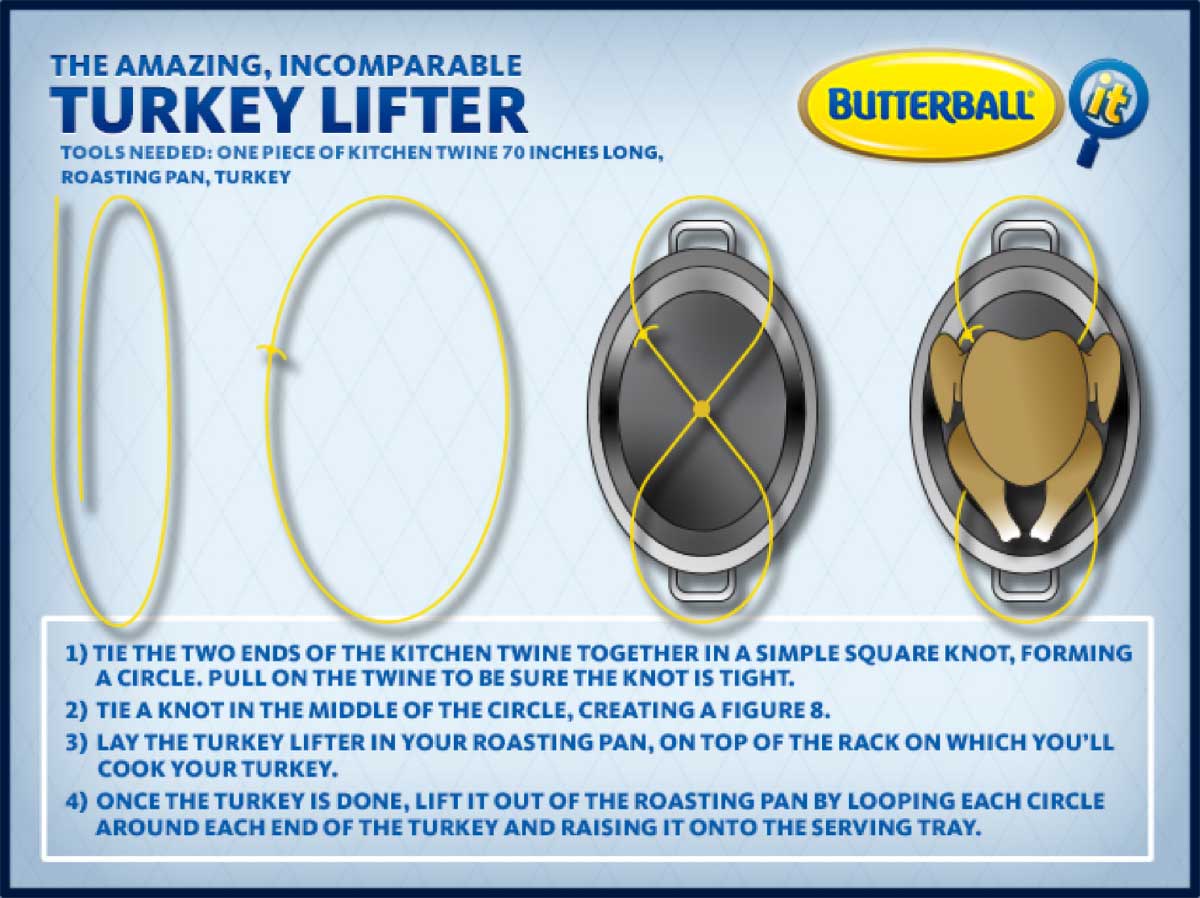
Whether you decide to carve the turkey in the kitchen (better if your turkey didn’t come out Instaperfect) or at the Thanksgiving table, here is all you need to know. Of course, you can always invite at least one person who has done this before and delegate!
We hear you, we like what we like. And that doesn’t have to include turkey. Want something else? Let us show you a few options from beef to pork to pumpkin lasagna.
A sieve is the best option here. Put a sieve over a bowl, pour the gravy in, and smooth it through the sieve with the back of a spoon. Don’t have a sieve? An immersion blender will do the trick, too. Just go low and slow−no one wants a gravy smoothie. Well, no one will admit it, anyway.
Add a few more herbs−rosemary, sage, thyme, or bay leaves are great for pumping up flavor−and simmer for a while longer. You can also get a little umami boost by adding a splash of soy, miso, or Worcestershire sauce (just enough for flavor, not enough to change the taste). Have a container of sodium-free broth concentrate? A tablespoon of that will go a long way, and chicken or vegetable broth will work perfectly.
Have any pan drippings left? You can make another unsalted batch and mix them together. Does anyone ever say there’s too much gravy? You can also add some sodium-free broth, reduce the gravy and taste.
Keep it in the pot (or in an insulated thermos) until it’s time to go on the table. Right before serving, pour hot water into your gravy boat to heat it up, empty it, and fill it with hot gravy.
Most gluten-free gravies rely on cornstarch, which can sometimes make things gloopy. Our preferred thickener is rice flour. You’ll get a smooth, silky, and gloop-free result.
Bottom line: Stuffing goes in the turkey and is cooked along with the turkey. Dressing is made separately in a pan. But for an in-depth treatise, turn your attention to this post: stuffing vs. dressing. It’s everything you need to know on the oft-debated topic.
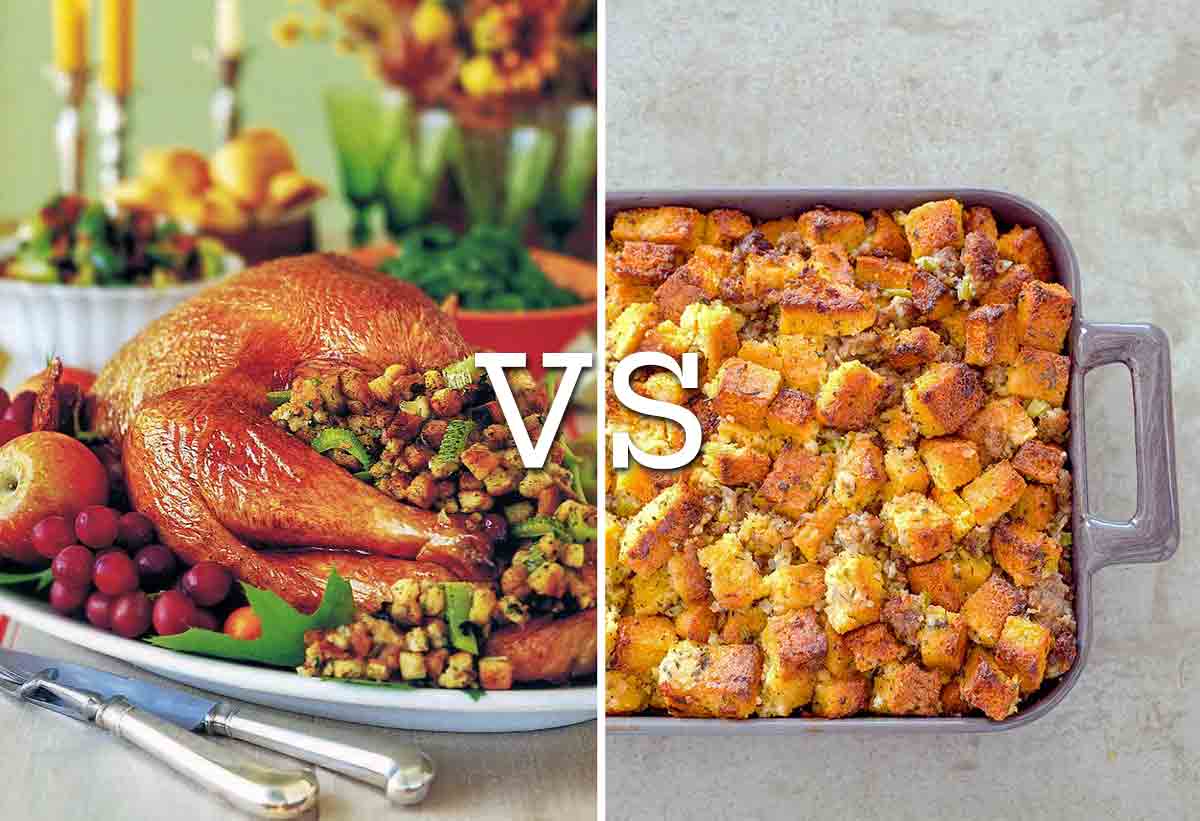
If you’re making dressing (see #41) rather than stuffing, you can fill the cavity with any kind of aromatic that you have on hand. Quarter an onion, lemon, orange, or quince, add a handful of herbs like rosemary, bay leaves, or thyme sprigs, and a couple of garlic cloves, and stick it all inside.
Don’t underestimate the allure of that savory, bready side dish. A 9- by 13-inch baking dish filled with 10 cups of cubed bread will feed 8 to 10 peeps. An 8” by 8” baking dish with 5 cups of cubed bread should be enough for 4 to 6 people. The ratio is roughly 10 cups of bread to 3 cups of chopped vegetables to 3 cups of liquid to 2 eggs (halve it for 4 to 6 people). Mix-ins like meat, spices, or herbs can be added on top of those measures.
If you’ve left your dressing in the oven too long, there’s a pretty simple fix. Drizzle it with stock or melted butter and put it back in the oven to just warm through.
If you’ve pulled all that stuffing out of the bird and you find that it’s a little wet, add more bread cubes if you have them, spread it all out of a baking sheet, and pop it back into the oven for a bit.
Ideally, you should cube your bread the night before and let it dry out (you want dry bread, not stale bread). If not, turn your oven to low and slide a baking sheet full of cubes inside. Even at low temp, they won’t take long to crisp up.
Again, melted butter will save the day. Give the dressing a little drizzle of butter with the addition of a bit more herbs, stir and place in a bowl.
Plan on at least 1/2 pound of potato per person, more probably, it’s Thanksgiving. Who doesn’t love mashed potatoes?
It depends on your preference. People are VERY set in what they think the right potato is−Russets are starchy and mash up very creamy. Yukon golds are waxy so they don’t absorb very much water when boiling. This means that they mash up fluffy and retain their natural flavor. A 50/50 split gives you the best of both, making them less likely to get gluey, but still fluffy and creamy.
Using anything more powerful than a potato masher, potato ricer, or handheld mixer is too vigorous and too aggressive for your spuds. A food processor will break down the cell walls and you’re just going to end up with a thick, sticky mess.
Put them into a pre-warmed bowl, cover with foil, and if possible, slide into the oven on low. If your oven is full, a slow-cooker will keep those tatties warm until serving time. They can also be put into a double boiler over very, very low heat. Just make sure the double boiler is covered and they’ll be fine until dinner is served.
The best way to avoid lumpy potatoes starts even before you commence mashing. Chop them into 1 1/2 inch chunks and add to the water before it boils. Putting the chunks into boiling water means that they won’t cook evenly, leaving you with both overcooked and undercooked potatoes.
If you’re mashing and you notice that they’re still a little lumpy, you’ve got some options. It’s possible that your potatoes are undercooked and those lumps likely won’t be mashed out. If that’s the case, put the potatoes into a saucepan, add a little milk and butter, and cook it over low heat. Let them heat until the lumps start to soften, then continue to mash.
If they’re just thick, and not gluey, it’s a pretty easy fix. Add more butter or a little stock, cream, or even sour cream. You can use milk but be aware that it will mostly just dilute the flavor of the potatoes if you need to use a lot.
You can add just about anything. Roasted garlic or mushrooms is amazing. So is a little bit of cheese−we recommend some sharp Cheddar, tangy goat cheese, or Gruyère. Chives, parsley, or a spoonful of horseradish wouldn’t be out of the question, either.
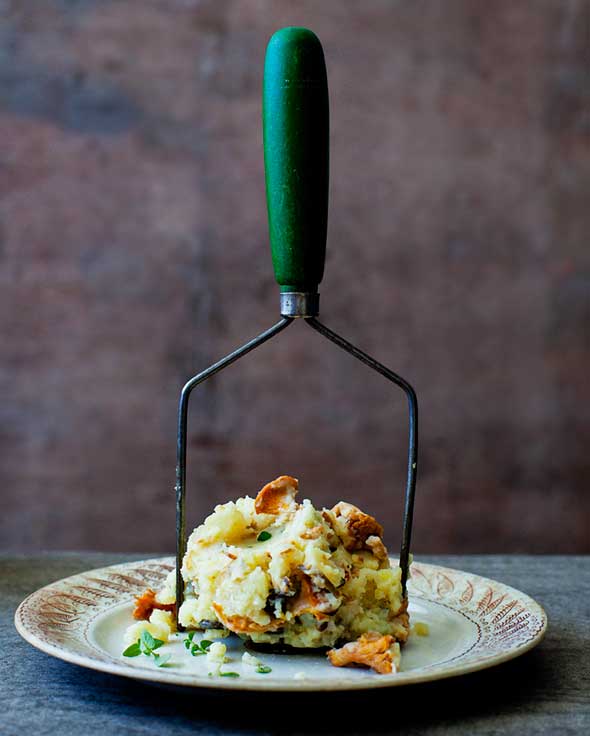
Mashed potatoes are, obviously, the tradition. But if you want to branch out, there are lots of other potato options. Scalloped (super for making ahead of time), roasted, and smashed are all easy and very tasty. And have you ever heard of punched potatoes?
We recommend two, at least. Depending on your leanings, a salad could count as one of those but if you’ve got veggie lovers coming to dinner, make two plus salad. Eat your veggies.
If there’s one veggie that can divide a room, it’s Brussels sprouts. A tiny, cabbagey, flavor bomb that lots of people just don’t know what to do with. Here are some of our best ideas, like sautéing them with ham and pecans, covering them with cheese, or roasting with balsamic. But for the love of Thanksgiving and everything good in the world, don’t just boil ‘em and dump ‘em in a bowl. They deserve better than that.
Turnips are misunderstood, for sure. They look like giant radishes, and who even knows what they taste like? A root vegetable related to arugula, they’re actually really good when added to a root vegetable gratin. Or if you’re feeling adventurous, try glazed turnips and apples.
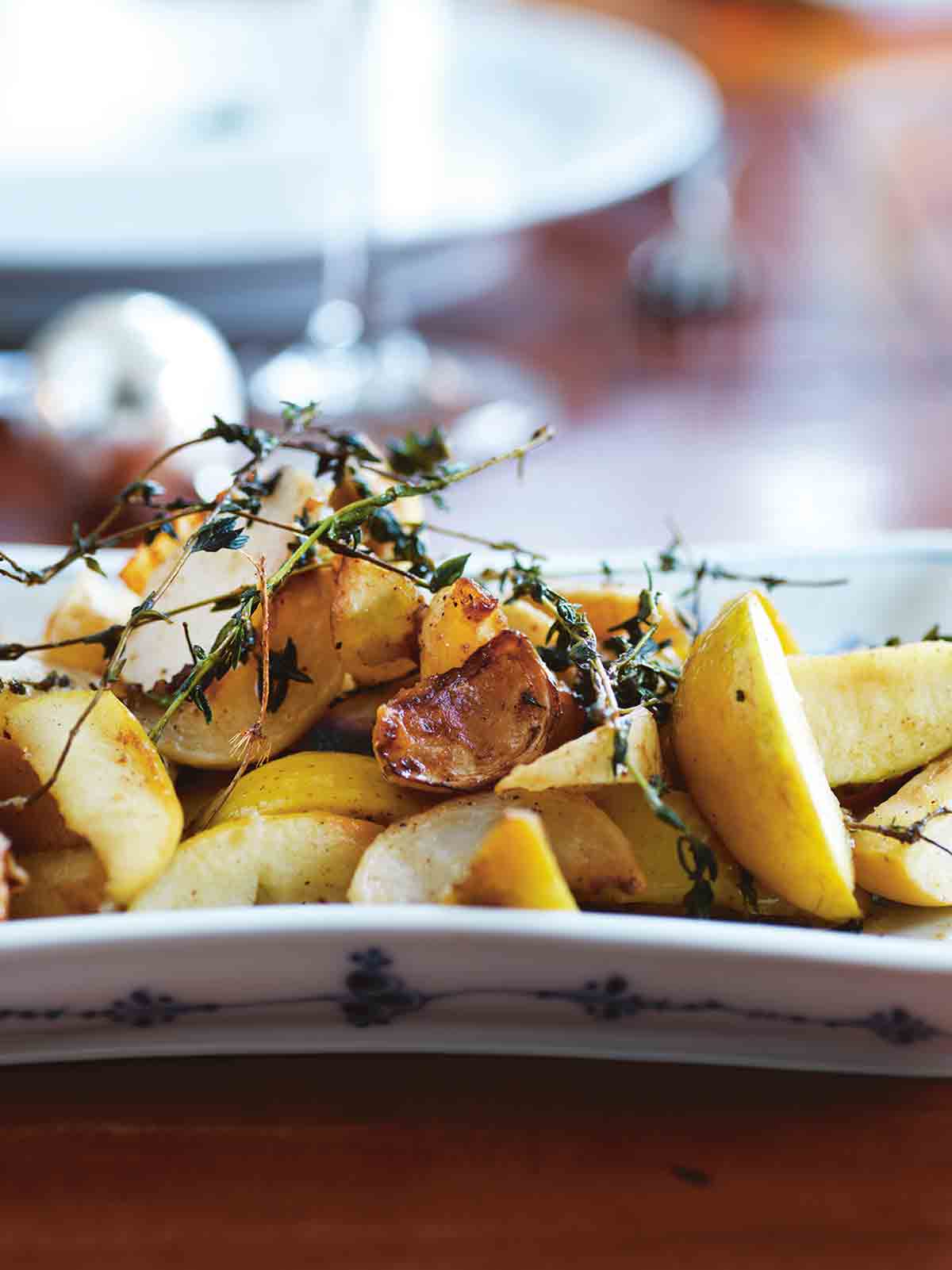
Nothing’s worse than a tray of roasted veg that ends up a mix of burned ends and raw middles. Or even worse, burned and soggy. First, cut everything as uniformly as possible, even if you’re mixing vegetables. Don’t crowd your pan, either, because that’s how you end up with soggy, steamed greens. Finally, make sure you’re roasting at 400℉ or 425℉ so you get the crisp and caramelized flavors you’re looking for.
Don’t panic−it happens. If they’re burned, there’s no salvaging it. Chuck ‘em out and never mention it again. If they’re just overcooked and mushy, purée them with a touch of warm heavy cream, a little broth, and you’ve got a soup course. Thanksgiving just got tastier.
Depending on what you’re working with, you can just add more vegetables. A few handfuls of wilted baby spinach will save a lot of things−it cooks down quickly and adds bulk to absorb some of that salt. Otherwise, a quick rinse under warm water can work miracles for a plate of too salty roasted carrots. Rinse, reseason (with no salt!), and put them back in the oven to rewarm. Anything that you boiled then salted (peas, green beans, asparagus, etc) can also be rinsed, rewarmed, and reseasoned.
Making pumpkin filling from an actual pumpkin takes time and you need to make sure you’re using the right pumpkin, called a sugar pumpkin. You can buy pumpkin purée (which oftentimes contains puréed squash, gasp!) if you prefer−that means that you’re just buying pumpkin/squash with nothing added, which is great in desserts such as pumpkin cake. Pumpkin pie filling, on the other hand, is puréed pumpkin with all the spices added and cuts down on your work even more.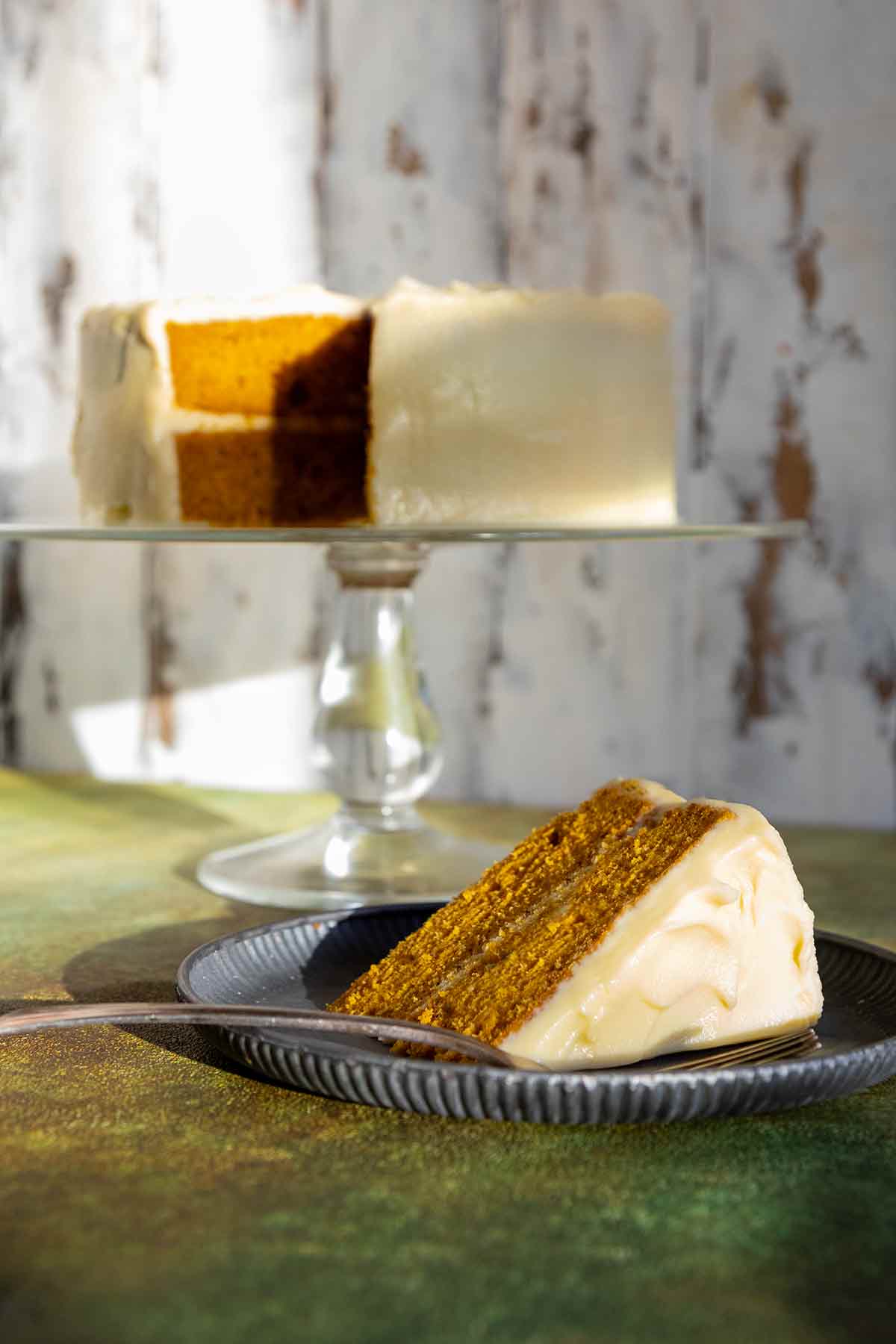
If you want to make a crust, we encourage you. It’s not that hard but you need to keep a few things in mind−stay calm, keep all the ingredients chilled, and don’t overwork the dough. Seriously, that’s really important. Here’s one of our best and easiest pie crust recipes.
If your pie dough breaks and crumbles when you try to roll it out, it’s probably too dry. This is a relatively easy fix. Sprinkle some cold water over the dough with your fingers and work it in—gently!—until the dough comes together. If your dough gets too warm, send it back into the fridge to chill. When you take it back out, it should roll more easily and without all those little tears and crumbles.
A pie crust needs a gentle touch and a cool hand. Start earlier than you think you need to and be patient. Want to make that pie picture perfect? The crimping of your crust not only makes it pretty, but it keeps all that filling from escaping. Want to try making a lattice crust? So now you’re just showing off. But why not? If you’ve got the time and patience, a lattice-topped apple pie will impress all your guests and make you the Thanksgiving master.
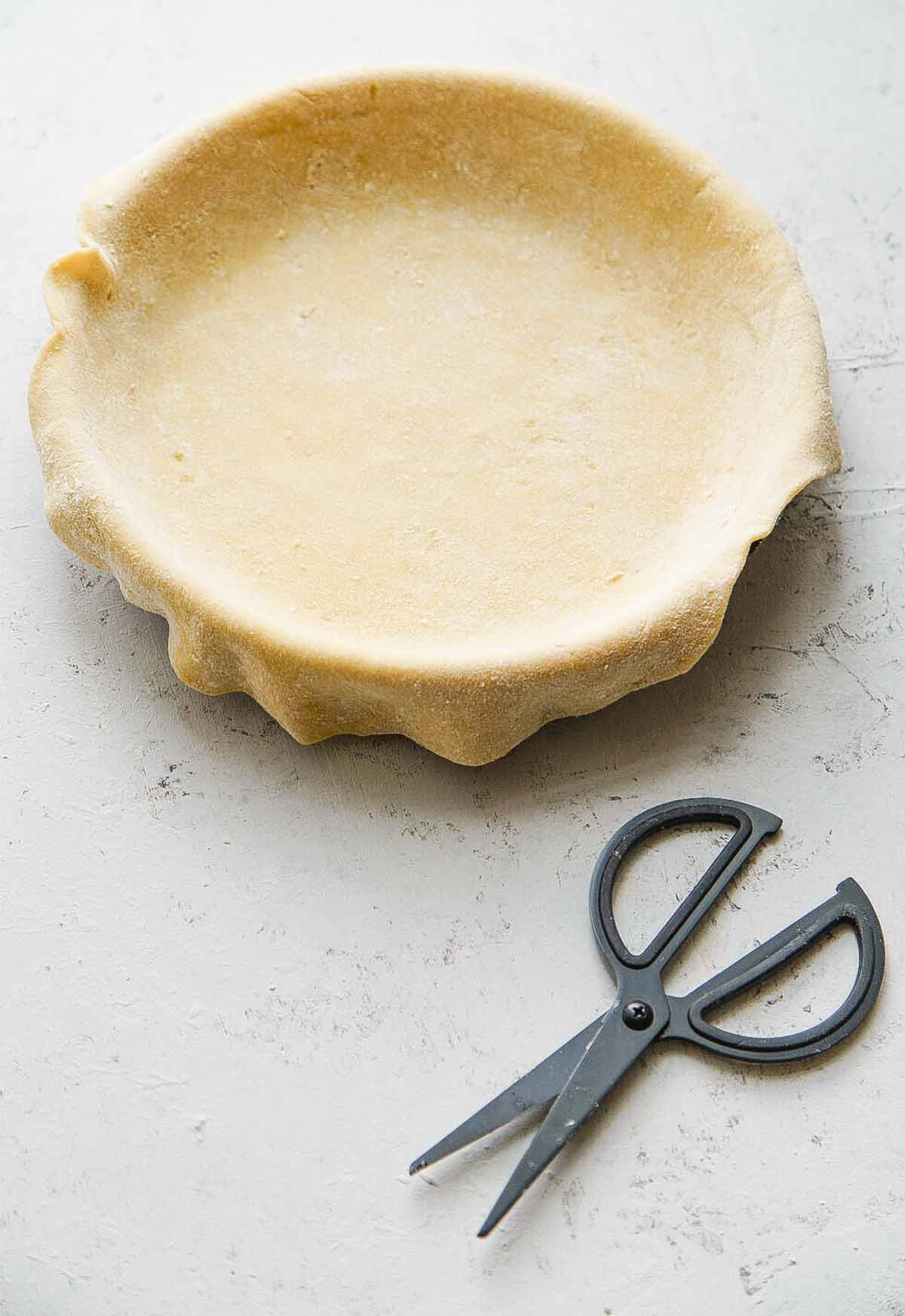
A lovely bronze top crust calls out to be eaten. If you pull your pie out of the oven and it needs a little more color, you can brush the top crust with an egg wash to create a nicely browned and glossy appearance. Beat an egg with a touch of water, cream, or milk and brush it on your top crust. While it’s better to do this before baking, you can always add the egg wash and pop it back into the oven for a few minutes.
Timing is everything here. Pulling your pie out of the oven within its optimum baking window—fully baked, but not overbaked—will prevent any cracks.
The thing that makes a pumpkin pie crack is the addition of eggs because they go from a liquid to a solid in the blink of an eye. They need to be cooked, obviously, but when they’re overcooked they tighten up and make those unsightly cracks. Placing your pie on a lower rack will help, then make sure to pull your pie out when you still have a good 4-inch spot in the middle that’s still a little jiggly. Once it’s fully cooled (and that takes several hours at least), the edges will have settled and the center will look firm.
Depends on what kind of flavors you like. A tart pie will benefit from Granny Smith, Cortland, or McIntosh apples. Honeycrisp, Gala, and Pink Lady apples have lots of sweetness and flavor. They also stay crisp which makes for a picture-perfect piece of pie. Apples like Golden and Red Delicious break down easily so we recommend mixing them with other apples in a pie.
Well…our favorite way to remedy this is to give the crust a swipe of chocolate before baking. Just us? Maybe you’ll find this more helpful−blind baking is the way to go. It helps to set everything up before you add the wet filling. You can also use an egg wash but, generally, blind baking is enough to keep this from developing a soggy bottom.
First, take a look at the pie and ask yourself if it’s actually done. Even if the top crust has good color, your pie might still need a little more time to cook off that liquid. Cut a few more vents if you can, that will help to get rid of some moisture. And remember that a hot pie will thicken up as it cools.
We say one day. If you make it farther ahead than that, your crust will get soggy. Leftover pie is one thing but if you’re presenting this gorgeous dessert as a lovely and fresh offering, you want it to taste as good as possible. If you’re really budgeting your time, make the dough ahead of time and put it in the freezer. Thaw and make the pie the day before Thanksgiving.
Those mile-high apple pies take a lot of apples and, if you chop them too small, they’ll break down and settle, leaving a gap. Try using firm apples such as Granny Smiths that hold up during baking. If you do want to use softer apples that will shrink, like Red or Golden Delicious, or McIntosh, slice them thicker and they shouldn’t settle as much. Also, a butter crust shrinks more than a shortening crust, so it will hug the filling as it cooks. Finally, you need vents−let the steam escape and the crust won’t puff up, leaving a gap.
Whipped cream is better when made fresh. It doesn’t take long (you can whip it up while your after-dinner coffee is brewing). You can make stabilized whipped cream, which stays firm for decorating cakes but it also works if you absolutely need to make it beforehand. But trust us−if you have a stand mixer and a few minutes before serving your pie, freshly whipped cream is perfection.
Got distracted watching the Thanksgiving football game and you overwhipped the cream? If it’s doesn’t have little bits of butter in it, you can save it. Put it back in the mixer, set it to low, and slowly drizzle in a little more heavy cream until the broken cream gets fluffy and light again. But this time, don’t take your eyes off it!
Aluminum foil is your secret weapon here. Pull that pie out of the oven and cover it with a sheet of foil. If it’s just the edges of the crust that are getting too dark, then you can just cover those bits. It takes a bit more maneuvering but it can be done. Pull off a long piece of foil, cut it down the middle lengthwise, and fold it into strips. Cover just the edges with the foil, leaving the middle open. Pop it back into the oven to finish.
You can go with either a red or a white with turkey, so you have a solid range of choices here. For whites, Chardonnay or dry Reisling are terrific choices because they’re light, bright, and minerally. Reds like Pinot noir, Gamay (or Beaujolais), or a mature Bordeaux or Rioja have just enough body and acidity to stand up to richer dishes. Finally, there’s nothing wrong with a Zinfandel or something bubbly either. It’s a party, after all.
A good rule of thumb is to have one bottle of wine per two people every two hours. This means if you host a four-hour Thanksgiving dinner for ten people, you will need two bottles of wine for every two guests, or 10 bottles of wine, regardless of what you’re serving. If you’re planning to use wine in any of your dishes, don’t forget to add that to the list separately.
Warm bubbles are just as disappointing as cold gravy. Your fastest options are wrapping it in a damp towel and placing it into the freezer, or filling a container with salted ice water and letting it sit. The method you choose depends on where you have more room, counter or freezer. Either method will chill that bottle in less than 10 minutes.
Keep in mind your designated drivers, your under-agers, and your non-drinkers, and offer something fun that shows you’ve thought about them, too. Flavored sparkling water, a fun punch, or sparkling juice are all festive choices. You can also do a little research ahead of time and come up with your own signature Thanksgiving cocktail (with a mocktail version, too) for your party. Need some inspiration? Take a look at David Leite’s very own namesake cocktail.
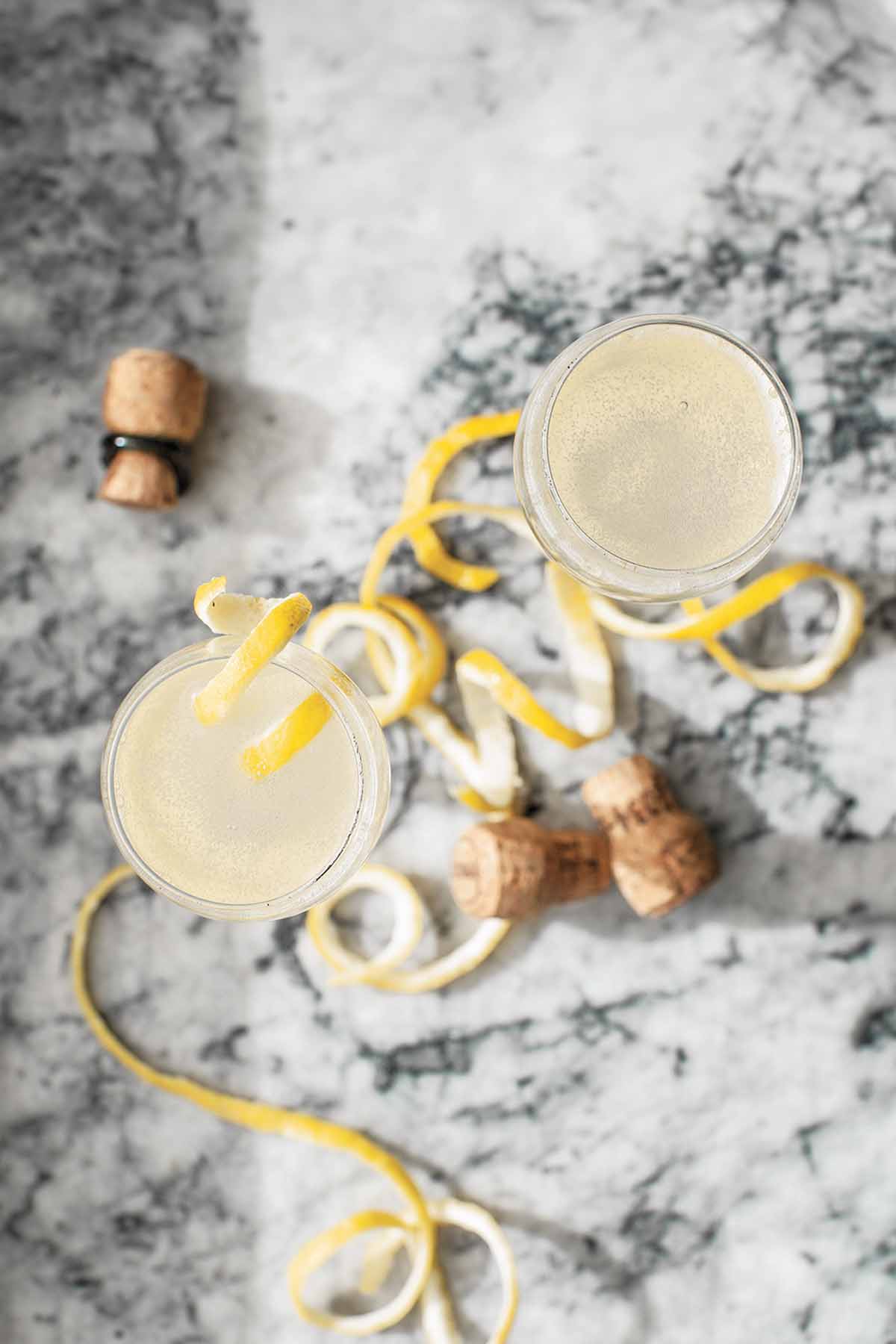
There are dishes you can make ahead of time but there’s more to Thanksgiving than just food, ya’ll. Clear room in the closet for coats. Set your table the night before. Make a playlist. Make sure you have enough ice. Put the white wine in the fridge. Iron your napkins. Take anything super personal out of your medicine cabinets. (Don’t kid yourself−peeps are gonna peep.)
Some of us are fine with asking if we need help or having people crowd the kitchen. You’re going to be busy−figure out now how much help you want and start thinking about who can do what. Or ask your favorite cousin to keep people corralled in the living room with a stockpile of snacks and drinks.
Some cooks don’t like to rely on other people to bring food and that’s fine. (Honestly, we get it.) However, people really just want to show their appreciation and there are things that’ll be helpful without infringing on your menu planning. Bags of ice, maybe some dinner rolls. Need a specific tool, like a meat thermometer or a carving knife? Or just ask for Champagne−who doesn’t love Champagne?
Warm bread is one of life’s joys but trying to smear it with a slab of rock-hard butter is heartbreaking. If you don’t have a microwave (or it’s in use), cut your slab of butter into smaller pieces and place somewhere warm, like next to the stove. Give it a few minutes and it should be spreadable and lovely.
Likely, what you’re asking about here is the turkey. You have three days to finish off that bird before it’s all over. If you have too much turkey to eat in that time, use the meat to make something that can be stashed in the freezer, like turkey soup, turkey shepherd’s pie, or enchiladas. The 3-day rule applies to most of the other leftovers, too.
If you can hang onto the carcass after you’ve carved off all the meat, you can make some of the best stock you’ve ever had. Then make turkey soup with some of the leftovers−you’ll be thankful that you did. We have a few recipes for chicken stock but they’ll work just as well with turkey. How about stock made from a roast turkey? Or stock made in your slow-cooker?
Some people like it just the way it is, spread on a leftover Thanksgiving turkey sandwich. But if you’re not one of those people, take this delish cranberry chutney upgrade for a spin. Some of us don’t even wait for leftovers and serve this on the big day.
Thanksgiving turkey, stuffing, gravy, and mashed potatoes come together in these adorable little muffin-sized snacks, Thanksgiving leftover turnovers, or a big ole Thanksgiving pot pie that’s filled with turkey, stuffing, cranberry sauce, potatoes, veggies, and gravy. David makes one every Black Friday.
Okay, okay! Here’s the ultimate list of what to do with everything you could possibly have leftover. And a few extra safety tips, just in case.
We hope that this list answered every question you’ve ever had about preparing Thanksgiving dinner, and then some. At Leite’s Culinaria, we’re all so thankful for your support, your questions, your comments, your photos, and your presence on the site. No matter how you’re celebrating this year, we hope it’s fantastic and full of love. And, of course, superb eats.

